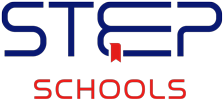STEAM at STEP
Our curriculum integrates science, technology, engineering, arts and mathematics to enable students to develop key problem-solving skills. Subjects like coding, computing and robotics are introduced at an early age to spark students’ interest in STEAM education. Our STEAM curriculum is supported by different teaching methodologies that instill communication, collaboration, creativity and critical thinking skills in our students. The continual advances in technology are changing the way students learn, connect and interact every day. At STEP, skills developed by students through STEAM will provide them with the foundation to succeed at school and beyond. By exposing students to STEAM and giving them opportunities to explore STEAM-related concepts, STEAM enables its students to develop a passion for it and hopefully pursue a bright career. Through STEAM, students develop key skills including:
- Problem solving
- Creativity
- Critical analysis
- Teamwork
- Independent thinking
- Initiative
- Communication
- Digital literacy.
Our STEAM-based curriculum has real-life situations to help the student learn. Classroom practices grounded in STEAM approaches integrate multiple levels to provide opportunities to see how concepts relate to life in order to hopefully spark a passion for a future career in a STEAM field. STEAM activities provide hands-on and minds-on lessons for the student. Making math and science both fun and interesting helps the student to do much more than just learn.
Applied Approach
STEP Curriculum guides teachers toward designing learning experiences that permit student independence and foster lifelong learning. Students take responsibility for their own learning, they become explorers capable of leveraging their curiosity to solve real-world problems. This approach is not only till the implementation of curriculum planning practices, and pedagogy but the assessment methods also support a student-centric approach.


